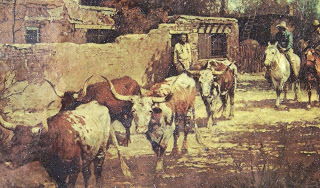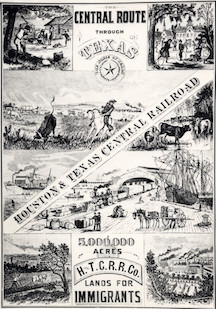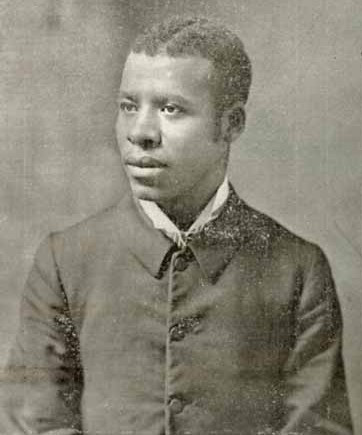News of the World
Read all about it!! Read it now before you watch the movie, which opens Christmas Day in theaters and on Netflix. News of the World is a novel by Paulette Jiles. The story takes place in Texas right after the Civil War. Captain Jefferson Kyle Kidd travels around the west reading news to the folks there, many of whom cannot read themselves, nor do they have access to newspapers. Somehow he ends up taking a young girl, stolen by a band of Kiowa raiders, back to relatives near San Antonio. Their dangerous journey is the main plot, but there is so much more.
Late 19th Century Texas–background information for News of the World–book and movie
–taken from “Book Browse”, an on-line newsletter
Paulette Jiles’ News of the World takes place in late 19th century Texas. Much of the state’s land was untamed and rugged, but in this time between the end of the Reconstruction and the beginning of the Progressive Era, Texas changed and grew, as did much of the western frontier and the New South.  It was the era of cotton, cattle and railroads, and it was a time of economic growth. Cotton was the most common crop grown for profit, and corn was the most common food crop. In fact, agriculture dominated the state economy, and much of it centered on ranching. Texas had always been cattle country, but after the Civil War, the economic importance of livestock grew. Wild longhorn cattle could be sold in the northern United States for up to six times what they went for in the South, so ranchers caught them and organized drives to get them up there, sometimes all the way up to Canada. Cowboys would travel for weeks at a time on trails with these wild cattle, thus creating the iconic vision of the Texan cowboy – fiercely independent and rugged – that has become a lasting symbol of the state. The growth of the railroad system vitalized commercial farming as well as ranching (but ended the golden era of the cowboy) – lumber was carried from east Texas. Cattle were carried from west Texas. Crops were also carried from farms all over the state, and people were able to travel to newly developing cities. In 1901, petroleum was found near Beaumont, Texas and became, at that time, the most productive oil well in the world. Oil discoveries continued after that, heralding in the oil boom, which permanently transformed and grew the economy of Texas.
It was the era of cotton, cattle and railroads, and it was a time of economic growth. Cotton was the most common crop grown for profit, and corn was the most common food crop. In fact, agriculture dominated the state economy, and much of it centered on ranching. Texas had always been cattle country, but after the Civil War, the economic importance of livestock grew. Wild longhorn cattle could be sold in the northern United States for up to six times what they went for in the South, so ranchers caught them and organized drives to get them up there, sometimes all the way up to Canada. Cowboys would travel for weeks at a time on trails with these wild cattle, thus creating the iconic vision of the Texan cowboy – fiercely independent and rugged – that has become a lasting symbol of the state. The growth of the railroad system vitalized commercial farming as well as ranching (but ended the golden era of the cowboy) – lumber was carried from east Texas. Cattle were carried from west Texas. Crops were also carried from farms all over the state, and people were able to travel to newly developing cities. In 1901, petroleum was found near Beaumont, Texas and became, at that time, the most productive oil well in the world. Oil discoveries continued after that, heralding in the oil boom, which permanently transformed and grew the economy of Texas.  Black and Latino communities emerged during the late 19th century too, separate from one another and from the dominant white population and, not surprisingly, they faced much discrimination. The population in Texas grew fast during this time – from over one and a half million in 1880 to over three million by 1900. People came in from other states, especially from the South, and immigrants from Mexico and Germany added numbers too. Most Black Texans worked as sharecroppers, tenant farmers who had to pay the landowner part of their crop as rent to use the land. Some also herded cattle, worked on the railroads, in lumber camps, on seaport docks, or as craftsmen. A few acquired their own land and opened their own businesses. The Colored Farmers’ Alliance was organized in the 1880s. Schools and churches were segregated, and funding was scarcer for those black institutions than for their white counterparts. Latino Texans had a similar experience. Some owned ranches and small businesses, but most herded sheep or cattle, or did manual labor like working on the railroad. Mexican immigrants took the place of black slaves on many cotton plantations. They worked for very little money and, just as before the Civil War, the white landowners were the primary beneficiaries of the cotton industry, which was booming. Being a sharecropper was an incredibly hard life. After accounts to the landowners were settled, sharecroppers rarely had money left over. Families, including children as young as four-years-old, worked together for long days, from sun up to sun down.
Black and Latino communities emerged during the late 19th century too, separate from one another and from the dominant white population and, not surprisingly, they faced much discrimination. The population in Texas grew fast during this time – from over one and a half million in 1880 to over three million by 1900. People came in from other states, especially from the South, and immigrants from Mexico and Germany added numbers too. Most Black Texans worked as sharecroppers, tenant farmers who had to pay the landowner part of their crop as rent to use the land. Some also herded cattle, worked on the railroads, in lumber camps, on seaport docks, or as craftsmen. A few acquired their own land and opened their own businesses. The Colored Farmers’ Alliance was organized in the 1880s. Schools and churches were segregated, and funding was scarcer for those black institutions than for their white counterparts. Latino Texans had a similar experience. Some owned ranches and small businesses, but most herded sheep or cattle, or did manual labor like working on the railroad. Mexican immigrants took the place of black slaves on many cotton plantations. They worked for very little money and, just as before the Civil War, the white landowners were the primary beneficiaries of the cotton industry, which was booming. Being a sharecropper was an incredibly hard life. After accounts to the landowners were settled, sharecroppers rarely had money left over. Families, including children as young as four-years-old, worked together for long days, from sun up to sun down.  The Democratic Party dominated politics in Texas after the Reconstruction. Interestingly, being a Democrat in this time period meant standing for retrenchment, white supremacy and states’ rights on racial issues, while the Republican Party favored expanding the rights of minorities, improving education, and developing economically. Texas music in the late 19th century included folk songs, religious spirituals, and the influences of black, Latino and German culture. Cowboy songs were popular too.
The Democratic Party dominated politics in Texas after the Reconstruction. Interestingly, being a Democrat in this time period meant standing for retrenchment, white supremacy and states’ rights on racial issues, while the Republican Party favored expanding the rights of minorities, improving education, and developing economically. Texas music in the late 19th century included folk songs, religious spirituals, and the influences of black, Latino and German culture. Cowboy songs were popular too.
………………………………………………………..
Jiles’ latest book, published this year, revisits the time and place of News of the World and involves a young man who plays the fiddle. Simon briefly plays in a Confederate band right at the war’s end. The story becomes a ‘boy meets girl–boy loses girl’ scenario after Simon meets a beautiful young woman during one of the band’s last functions. Set during the time of Reconstruction and told with a lyrical flair that endears the reader to both the boy and the girl, the saga follows the young people as they go their separate ways. Will they get back together? You will need to read Simon the Fiddler to find out!
